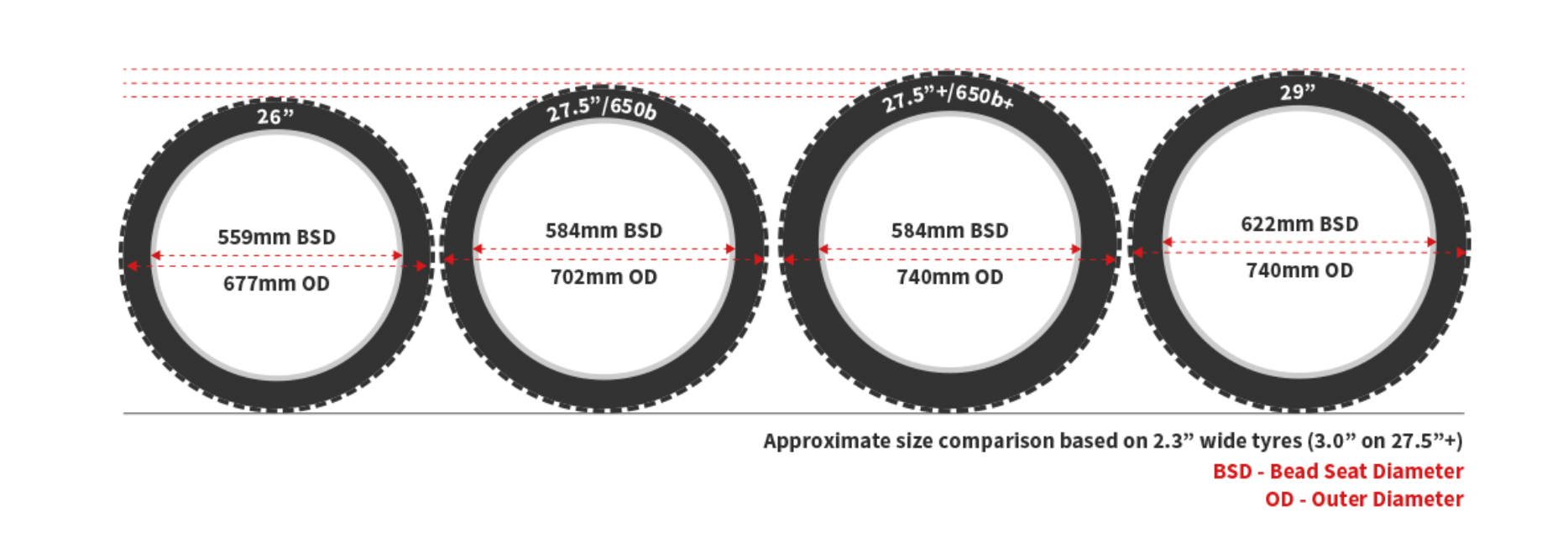December 8, 2025
•
4 minute read
What are the best tyres for mountain bikes? Tips and recommendations for choosing the right MTB tyres
Essential Guide: Everything You Need to Know About Mountain Bike Tyres
Jake Fieldsend
Founder & CFO
When it comes to MTB tyres, size matters, and there are several options to consider. If you're looking for bike repair near you, keep in mind that different sizes have their own benefits. The 29er is a popular choice among MTB riders, as they roll faster than bikes with smaller 27.5" wheels and the same tyres. It's important to think about wheel size in addition to tyre size. Tyres are measured by their width and the size of the rim they're designed to fit. Wider tyres offer more grip as they have more rubber in contact with the ground, while narrower tyres roll faster with less resistance. However, this only applies to wheel/tyre combinations with the same diameter. Mountain bikes come with different wheel sizes, which include:

Design
Design plays a crucial role in the performance of MTB tyres, and it's essential to choose the right tyre designed for your bike's wheel. While it's possible to use a front tyre on the rear and vice-versa, it's recommended to use the manufacturer's intended tyre for optimal performance. MTB tyres are designed with a specific tread pattern that gives an optimized performance on the intended wheel. Typically, the front tyre has a wider profile than the rear tyre, with higher side lugs and lower central lugs that offer better cornering confidence and low rolling resistance. To find the right MTB tyre for your bike, you can visit cycle shops that offer a wide range of options suitable for your riding style and preferences.
Protection
When it comes to mountain bike tyres, puncture protection is a must as they need to withstand rough riding on challenging terrain. However, the drawback of having a tough tyre is that it can also be heavy. While cross-country race tyres are the lightest, they are not recommended for everyday riding due to their lack of durability. On the other hand, downhill tyres are the toughest, with double thickness sidewalls to reduce the risk of getting a flat when the tyre pinches against the rim. However, these tyres are too heavy for efficient trail riding.
For most MTB tyres, they fall somewhere in between cross-country race tyres and downhill tyres. High-end modern tyres have added tough abrasion-resistant layers to increase durability without adding too much weight. Moreover, premium MTB trail tyres come with sidewalls reinforced with a lightweight abrasion-resistant layer that protects the sidewalls from cuts as they are particularly exposed to cuts from rocks. When searching for the best sidewall protection, look for brands like Specialized GRID, Schwalbe Evo, Continental Apex, or Maxxis Exo tyres. If you need help finding these tyres, consider visiting your local cycle shops.
Tubeless
Tubeless tyres are a popular choice for modern mountain bikes due to their increased puncture resistance without adding extra weight. They are often used with tubeless tyre sealant which can help seal small punctures while riding, and larger punctures can be easily repaired without the need to remove the wheel. One of the key benefits of tubeless tyres is the ability to safely run lower tyre pressures for improved grip, without the risk of pinch punctures that can occur with traditional inner tubes.
Pressure
When it comes to mountain biking, getting the right tyre pressure is crucial for optimal performance. The ideal tyre pressure for your MTB depends on several factors such as your riding style, weight, and the type of trail surface you'll be riding on. Your tyres should be soft enough to handle uneven terrain but not so soft that you risk damaging your rims or experiencing tyre folding while cornering. Finding the perfect tyre pressure may require some trial and error, and it's best to start with the manufacturer's recommended tyre pressure, which is typically printed on the tyre's sidewall. From there, you can experiment with slightly higher or lower pressures to find what works best for you. Keep in mind that a digital pressure gauge or digital track pump is the most accurate way to measure tyre pressures.



